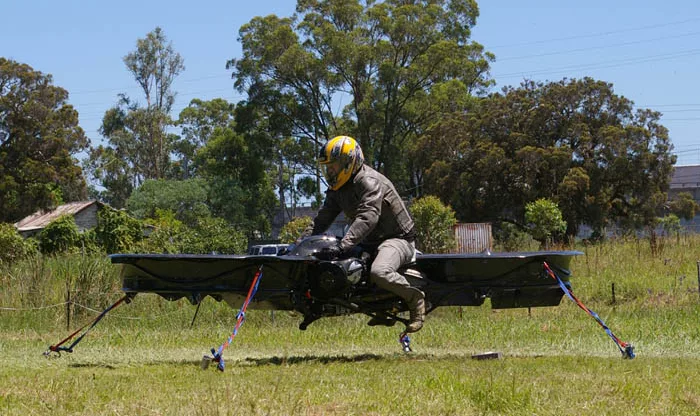Imagine a world where you could effortlessly glide through the air, avoiding traffic jams and congested roads.
The concept of hoverbikes could make this dream a reality.
This untapped field of personal transportation technology aims to revolutionize how we travel in urban environments.
In this article, we’ll delve into the potential applications, challenges, and the innovative minds behind the development of hoverbikes.
Soaring High: Potential Applications of Hoverbikes
Hoverbikes have the potential to transform personal transportation. Here are some possible applications:
- Urban commuting: Hoverbikes could provide an efficient, eco-friendly alternative to cars and public transportation, helping to reduce traffic congestion and pollution.
- Emergency services: Hoverbikes could enable first responders to quickly reach accident scenes or disaster zones, potentially saving lives.
- Recreation: These vehicles could open up new possibilities for recreational activities, such as aerial exploration and extreme sports.
The Roadblocks: Challenges in Hoverbike Development
Developing hoverbikes is no easy feat. Engineers and designers face several obstacles, including:
- Safety: Ensuring the safety of riders and pedestrians is paramount. Collision avoidance systems, fail-safe mechanisms, and robust training programs are essential for the widespread adoption of hoverbikes.
- Power: Developing efficient and lightweight power sources for hoverbikes is a major challenge. Current battery technology may not be sufficient for extended flight times.
- Regulations: Creating and implementing regulations for the use of hoverbikes in urban environments is a complex task. Authorities will need to address issues such as airspace management and licensing.
Watch the world’s first flying bike making its US debut.
Follow us for more automobile news, articles and videos! #sphere #reuters #voanews #media #article #news #automobile #air #bike #technology #innovation #creativity #future #hoverbike #flight #detroit #america #japan pic.twitter.com/eHuEswfGAX
— Sphere (@spheresonline) September 22, 2022
The Visionaries: Pioneers in Hoverbike Technology
Several innovative minds are pushing the boundaries of personal transportation technology with their groundbreaking work on hoverbikes.
Here are two notable examples:
- Colin Furze: A British inventor, Furze gained widespread attention for his homemade hoverbike prototype, which used two large propellers to achieve flight.
- Malloy Aeronautics: This UK-based company has developed a hoverbike prototype called the “Drone 3,” which combines elements of a helicopter and a motorcycle.
Conclusion
As we look to the future of personal transportation, hoverbikes offer a tantalizing glimpse into the possibilities that lie ahead.
While challenges remain, the potential benefits of these innovative vehicles are undeniable.
As researchers and engineers continue to refine and develop hoverbike technology, we may soon find ourselves soaring through the skies, leaving traffic jams and crowded streets far behind.
FAQ
Q: What is a hoverbike?
A: A hoverbike is a small, personal aerial vehicle designed for transportation in urban environments.
It operates by hovering above the ground, potentially offering a more efficient and eco-friendly alternative to traditional transportation methods.
Q: Are hoverbikes currently available for purchase?
A: At the moment, there are no commercial hoverbikes available for purchase.
The technology is still in the development stage, with several prototypes being tested and refined by various companies and inventors.
Q: How do hoverbikes work?
A: Hoverbikes utilize powerful propellers or thrust systems to generate lift, allowing them to hover above the ground.
The specific technology and design may vary between different prototypes and inventors.
Q: What are the challenges in developing hoverbikes?
A: Some of the main challenges in developing hoverbikes include ensuring safety, developing efficient power sources, and creating appropriate regulations for their use in urban environments.
Q: Can hoverbikes be used for recreational purposes?
A: Yes, hoverbikes have the potential to be used for recreational purposes, such as aerial exploration and extreme sports.
However, safety measures and proper training would be essential before engaging in recreational activities using hoverbikes.

I am a fun fact enthusiast and creator of Facts On Tap.
I love to share my knowledge and curiosity with readers and inspire them to learn something new every day.
When I’m not writing, I enjoy traveling, reading, and playing trivia games with my friends.




